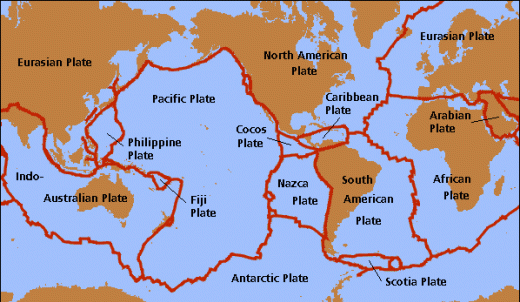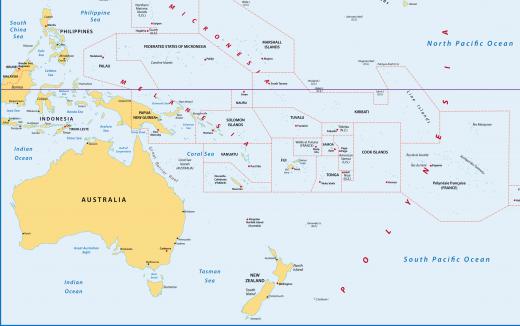In Geology, what is the Difference Between a Platform, Shield, and Craton?
 Michael Anissimov
Michael Anissimov
Geologists analyze the Earth's crust in detail to determine its composition, age, and tectonic history. One important distinction they have made is between the Precambrian (more than 542 million years old) crystalline igneous and high-grade metamorphic basement making up the continents, called a shield, and an extensive sedimentary layer covering some parts of this area, called a platform. Together, the two layers make up a craton, which is the foundation for a continent. One example of a shield is the Canadian Shield, which underlies modern-day Canada.
Continents and cratons are not exactly the same thing. For instance, the island New Guinea, just north of Australia, is part of the Australian craton, but not part of the Australian continent because the strait between New Guinea and the mainland is currently flooded. During the last Ice Age, this strait was dry, and both bodies of land were part of the same land mass.

A shield is, specifically, an exposed area of Precambrian igneous or metamorphic rock. When covered by a platform, it is called the basement. A platform may be hundreds of yards (meters) thick, but must have been created in just the past few hundred million years. Shields themselves may be billions of years old, and the oldest continental ones, found in Canada and a small part of Australia, are as much as 4 billion years old, just 570 million years after the formation of the Earth itself.

Different tectonic plates are made up of different shields. People might think it would be possible to tell them apart just by looking at a map of the world, but it's not so easy. To truly see them requires analyzing rock from everywhere in the world and knowing the depth of the oceans worldwide. For instance, Greenland and North America are part of the same craton, but India, Europe, and the rest of Asia are not. There are even submerged cratons, like the Kerguelen Plateau in the southern Indian Ocean.
AS FEATURED ON:
AS FEATURED ON:












Discussion Comments
If continent has to be a continuous landmass, then there are really only four continents in the world: Africa-Eurasia; The Americas; Antarctica; Australia.
Post your comments